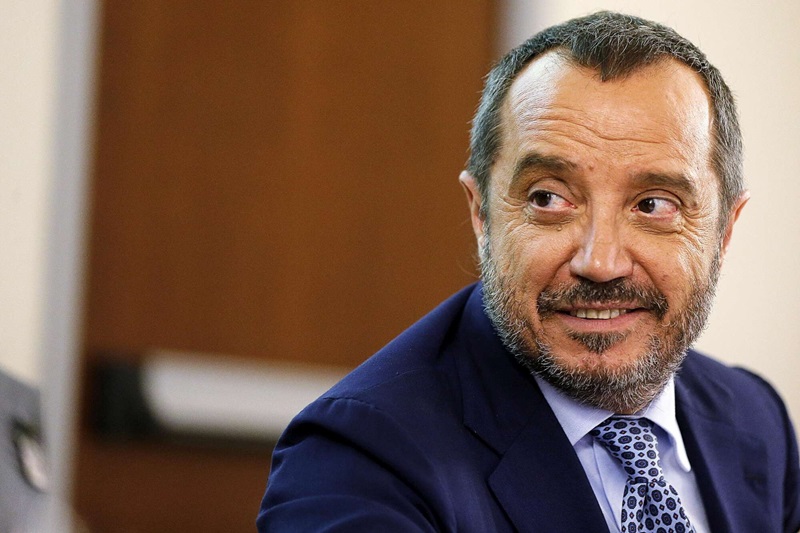There are two key words: withdrawal and triangulations. The elections in France will be played out in the second round scheduled for July 7. The victory of the National Rally is not in question. But the numbers will be important. The decisive number is 289. That is to say, the minimum number of seats that a party must win in the National Assembly to have a majority. In the first round, 39 deputies from the RN were elected, against 32 from the New Popular Front. To access Parliament, all the others will have to come first (without having an absolute majority) in the second round. And for Marine Le Pen and Jordan Bardella, everything could become more complicated. Because depending on the agreements between the parties, the candidates could withdraw and abstain to weaken the RN. On this basis, three different scenarios are envisaged.
Triangulations and withdrawals
The three-candidate challenges in the constituencies depend on the particularity of the French system, which does not provide for a second round between the top two ranked as in traditional double-round majority systems. Indeed, anyone who has reached at least 12.5% of the vote will be able to vote on July 7. And the very high turnout has precisely favored this scenario. And so at least three candidates would arrive in each constituency: that of the RN, that of the New Popular Front and that of Ensemble, Emmanuel Macron's party. In the recent electoral history of France, there were 34 triangulations in 2012, only one in 2017 and 7 in 2022. This time, however, there are 306. But today at 6 p.m., candidates who intend to withdraw must do so officially. And they have already announced that 173 of them will do so. They have renounced, from time to time, the Macronists or the Mélenchonists to favor the other candidate with higher results. By making a renunciation.
Three scenarios
Those who choose to withdraw do so for political reasons. That is to say, the voter who chose to vote for the center or the left in the first round decides to turn to the other candidate in order to stop the RN candidate. But there are many unknowns on this subject. Because not finding their candidate at the polls could on the contrary push the voter to abstain. Or to vote for Le Pen and Bardella, if they do not like the left-wing candidate. According to the polls, 58% of voters who voted Ensemble in the first round do not intend to participate in the second if their candidate withdraws. 30% would vote for the NFP, 18% for Le Pen. Even on the left, 50% of voters could abandon the polls. On this basis, he explains today to Corriere della Sera For Gilles Gressani, director of the magazine Le Grand Continent, there are three scenarios for the new Parliament.
Le Pen's victory, the right-wing alliance, the draw
The first scenario is that of the failure of the Republican Front. In this case, the RN, allied with the Gaullists of Ciotti and the radical right of Reconquête, would exceed the 289 seats necessary for an absolute majority, to reach a little over 300 votes in the National Assembly. For Gressani, this is an “unlikely” scenario for the moment. The other scenario is that of a general blockade, in which the 300 third-placed candidates renounce running on Sunday 7th. Lepen's supporters would then stop at 260 seats. This also seems unlikely, given that neither the Republicans nor Macron have so far given this indication. The third scenario is however the one that Gressani considers the most likely. He foresees a general renunciation of the left-wing candidates for the seats for which they are third, i.e. 129 in total.
Parliament blocked
In this case, the Rally and its arrivals would reach 275 seats. The New Front would have 150 deputies and the Ensemble 80. And with these figures the phenomenon of a blocked Parliament would occur. And Le Pen and Bardella could not aspire to the post of Prime Minister. To form the government, there must be a great agreement between the forces competing in the elections. And one of the two alliances would exclude either the RN or the left from the pact. The world writes that there are 173 candidates who qualified for the second round of the legislative elections but who withdrew to “block” the candidates of the National Rally. The newspaper's count indicates that 122 candidates who withdrew are from the left of the New Popular Front, 46 from the Macronist bloc and one from the Republicans.
The country's vote, the city's vote
In the meantime, the analysis of the first round vote holds many surprises. The first is that of the vote of young people between 18 and 24 years old, who chose the left at 48%, while in the same age group the RN obtained 33%. The Le Penistas, on the other hand, are strong among 50-59 year olds and 60-69 year olds. Where they reach percentages of 40%. On the side of the professional categories, Le Pen's party obtained 57% of workers, 44% of employees and 31% of retirees. The RN is the first party among those who earn less than 1250 euros per month. While 37% of highly educated people voted for the New Popular Front. Maps like that of Libération betray on the other hand a vote of the countryside increasingly to the right and a vote of the cities increasingly to the left: Paris is red, everything around is black.


